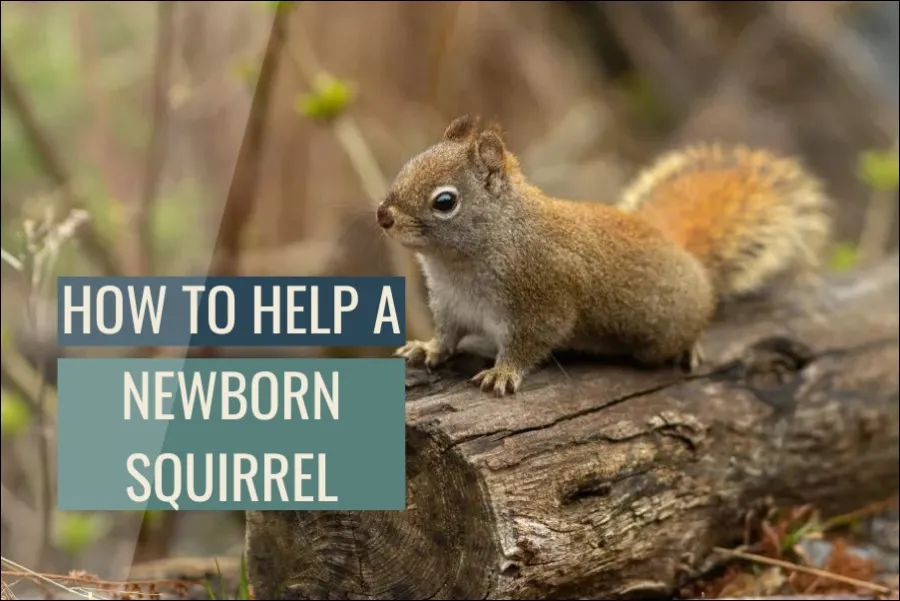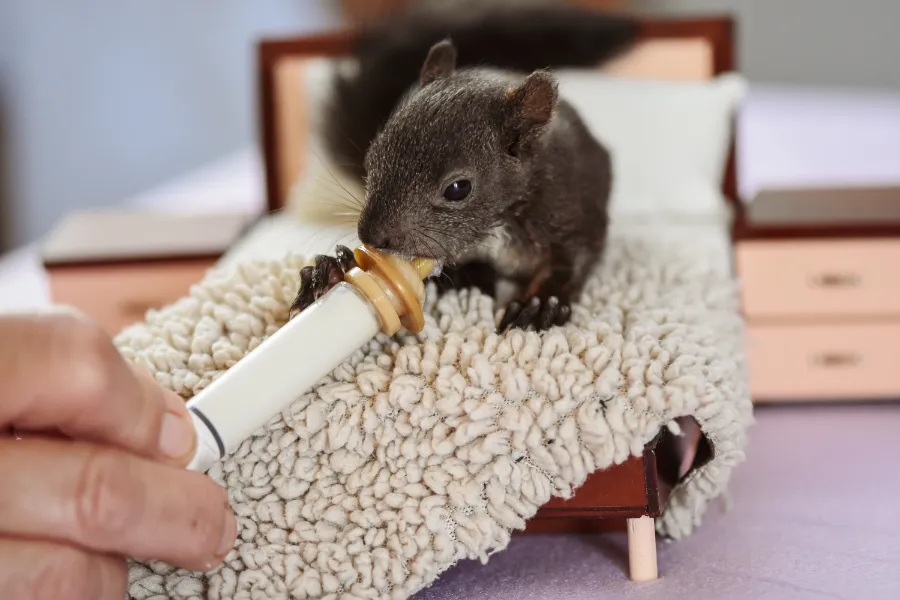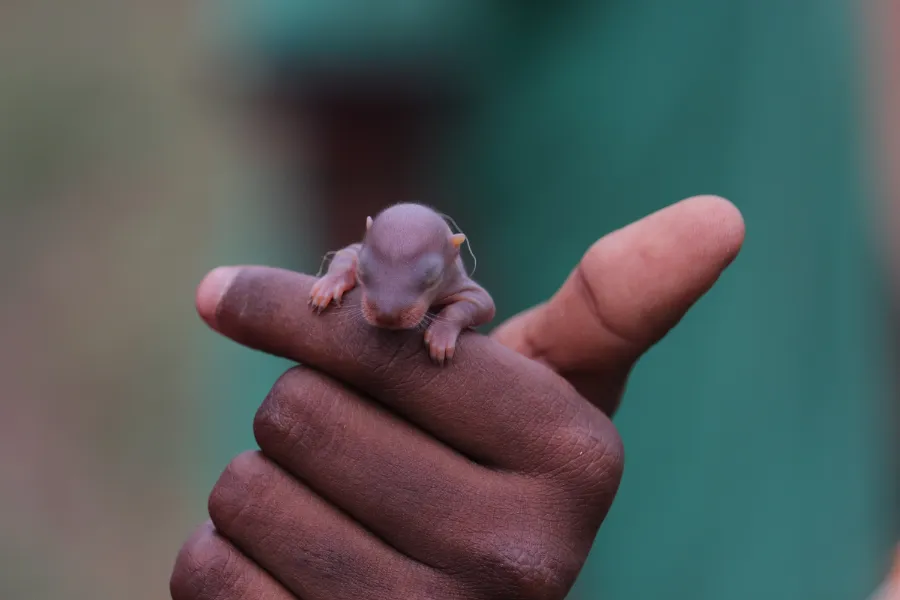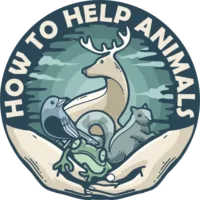
Finding a newborn squirrel can be a heartwarming but also overwhelming experience. It’s natural to want to help, but it’s important to keep in mind that the best way to help a newborn squirrel is to ensure that it is reunited with its mother, if possible.
To help a newborn squirrel, keep it in a small, enclosed space with a heat source to keep it warm. Do not try to feed it as it can easily aspirate on the formula. Contact a wildlife rehabilitation center for assistance. They will provide the proper care and nutrition for the squirrel.
If the mother is absent or unable to care for the squirrel, interim care may be required until the squirrel can be transferred to a professional wildlife rehabilitator. In this essay, we’ll discuss how to assist a newborn squirrel in need.
Assess the situation and determine if the squirrel needs help
The first step in assisting a baby squirrel is to examine the circumstances and determine whether the squirrel genuinely requires assistance. It’s crucial to note that squirrels leave their infants alone for short periods of time as they forage for food, and the mother may return. As a result, it’s a good idea to monitor the squirrel from a safe distance before deciding to intervene.
If the mother does not return within a few hours, or if the squirrel looks to be in urgent danger (e.g., on a busy road), interim care may be required. In these circumstances, it’s critical to prevent contact with the squirrel’s saliva since some squirrel species can have illnesses that can be passed to humans. After touching the squirrel, put on gloves and thoroughly wash your hands.
Keep the squirrel warm and comfortable.
Newborn squirrels cannot control their body temperature and must rely on their moms to remain warm. If you are temporarily caring for a squirrel, it is critical to keep the squirrel warm and comfortable. One simple method is to put the squirrel in a tiny box lined with a nice, clean towel. To offer additional warmth, use a low-temperature heating pad or a hot water bottle wrapped in a towel. Make sure the squirrel has enough space to roam about but not so much space that it gets cold.
Feed the squirrel properly
Feeding a baby squirrel is a complex process since it is critical to supply the squirrel with the proper nourishment while avoiding overfeeding. Overfeeding can cause digestive troubles as well as other health problems. If you are temporarily caring for a squirrel, it is preferable to get guidance on feeding from a qualified wildlife rehabilitator or a veterinarian with experience treating squirrels. In general, squirrels should be fed a baby squirrel formula, which may be bought from a wildlife rehabilitator. With a little feeding syringe or eyedropper, provide the formula to the squirrel.

Handle the squirrel carefully and minimally.
Handling a newborn squirrel as little as possible is necessary since it might be unpleasant for the squirrel and interfere with the bonding process with its mother. If you must handle the squirrel, do it carefully and with as little force as possible. Handling the squirrel by the tail might cause harm to the squirrel’s spine. Instead, use your hands to support the squirrel’s body. When feeding the squirrel, make careful to keep it upright and support its head and neck.
Find a licensed wildlife rehabilitator.
After assessing the situation and determining that the squirrel need assistance, the next step is to locate a professional wildlife rehabilitator. Animals rehabilitators are educated to care for wounded, orphaned, or sick wildlife and will have the skills and resources to offer the best treatment possible for the squirrel. In the United States, the Wildlife Rehabilitators Association of North America (WRANA) or the National Wildlife Rehabilitators Association (NWRA) can help you find licensed wildlife rehabilitators in your region (NWRA). In other countries, contact your local animal welfare or conservation group to find licensed wildlife rehabilitators.
Avoid keeping the squirrel as a pet.
It is essential to remember that squirrels are wild creatures and are not suitable as pets. It is unlawful to keep most species of squirrels as pets in the United States without a specific permit, and attempting to domesticate a wild animal is typically not a smart idea. Keeping a squirrel as a pet is not only unlawful, but it may also be damaging to the squirrel, causing stress and preventing the squirrel from developing the skills needed to live in the wild.
Take care of yourself and seek help if needed.
Caring for a baby squirrel may be both emotionally and physically taxing. It is critical to look for oneself and seek help if necessary. If you’re feeling overwhelmed or unsure how to continue, don’t be afraid to seek advice from a qualified wildlife rehabilitator or a veterinarian with experience with squirrels.
Prevent future encounters with orphaned squirrels
Taking precautions to avoid future contacts with orphaned squirrels is one technique to assist a young squirrel. You may help orphaned squirrels by doing the following:
- Regularly trimming trees and bushes to avoid branches from breaking and falling on nesting
- Keeping cats indoors or supervising them while they are outside
- Notifying a registered wildlife rehabilitator or animal control agency about wounded or orphaned wildlife

Donate to or volunteer with wildlife rehabilitation organizations
Donating to or volunteering with wildlife rehabilitation groups is another option to assist a newborn squirrel. These organizations rely on contributions and volunteers to operate and care for wounded, orphaned, and ailing animals. By donating to these organizations, you can help guarantee that resources are available to assist squirrels and other wildlife in need.
Educate others about proper squirrel care
Finally, one of the most effective methods to assist a baby squirrel is to teach people about appropriate squirrel care. You can help guarantee that more squirrels get the care they need and may flourish in the wild by spreading the word about how to properly care for orphaned squirrels and avoiding confrontations with orphaned squirrels.
In conclusion
Finding a newborn squirrel may be both exciting and overwhelming. It’s natural to want to assist, but bear in mind that the best approach to aid a baby squirrel is to reconnect it with its mother, if possible. If the mother is absent or unable to care for the squirrel, interim care may be required until the squirrel can be transferred to a professional wildlife rehabilitator. In this essay, we discussed how to assist a newborn squirrel in need.
There are various additional things you may do to aid a newborn squirrel besides reconnecting it with its mother or giving temporary care. These include keeping the squirrel warm and comfortable, feeding the squirrel properly, handling the squirrel carefully and minimally, locating a licensed wildlife rehabilitator, avoiding keeping the squirrel as a pet, taking care of yourself and seeking help if necessary, avoiding future encounters with orphaned squirrels, donating to or volunteering with wildlife rehabilitation organizations, and educating others about proper squirrel care. Following these procedures will assist guarantee that the squirrel receives the care it need and has the best chance of prospering in the wild.
